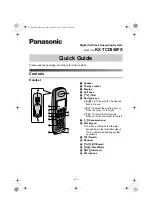
10 ENGLISH
To prevent the switch trigger from being accidentally
pulled, a lock-off button is provided. To start the tool,
depress the lock-off button and pull the switch trigger.
Release the switch trigger to stop.
2
1
Fig.9
►
1.
Switch trigger
2.
Lock-off button
NOTICE:
Do not pull the switch trigger hard
without pressing in the lock-off button.
This can
cause switch breakage.
CAUTION:
The tool starts to brake the cir-
cular saw blade rotation immediately after you
release the switch trigger. Hold the tool firmly to
respond the reaction of the brake when releasing
the switch trigger.
Sudden reaction can drop the tool
off your hand and can cause a personal injury.
Adjusting depth of cut
CAUTION:
After adjusting the depth of cut,
always tighten the lever securely.
Loosen the lever on the depth guide and move the base
up or down. At the desired depth of cut, secure the base
by tightening the lever.
For cleaner, safer cuts, set cut depth so that no more
than one blade tooth projects below workpiece. Using
proper cut depth helps to reduce potential for danger-
ous KICKBACKS which can cause personal injury.
1
Fig.10
►
1.
Lever
NOTICE:
If the base doesn't slide up or down
smoothly, the depth guide may have been tilted. In
this case, adjust the depth guide (refer the section
about adjusting the depth guide).
Bevel cutting
CAUTION:
After adjusting the bevel angle,
always tighten the clamping screws securely.
Loosen the clamping screws. Set for the desired angle
by tilting accordingly, then tighten the clamping screws
securely.
1
1
Fig.11
►
1.
Clamping screw
Positive stopper
The positive stopper is useful for setting the designated
angle quickly. Turn the positive stopper so that the
arrow on it points your desired bevel angle (around
22.5°/45°/60°). Loosen the lever and then tilt the tool
base until it stops. The position where the tool base
stops is the angle you set with the positive stopper.
Tighten the lever with the tool base at this position.
1
Fig.12
►
1.
Positive stopper










































